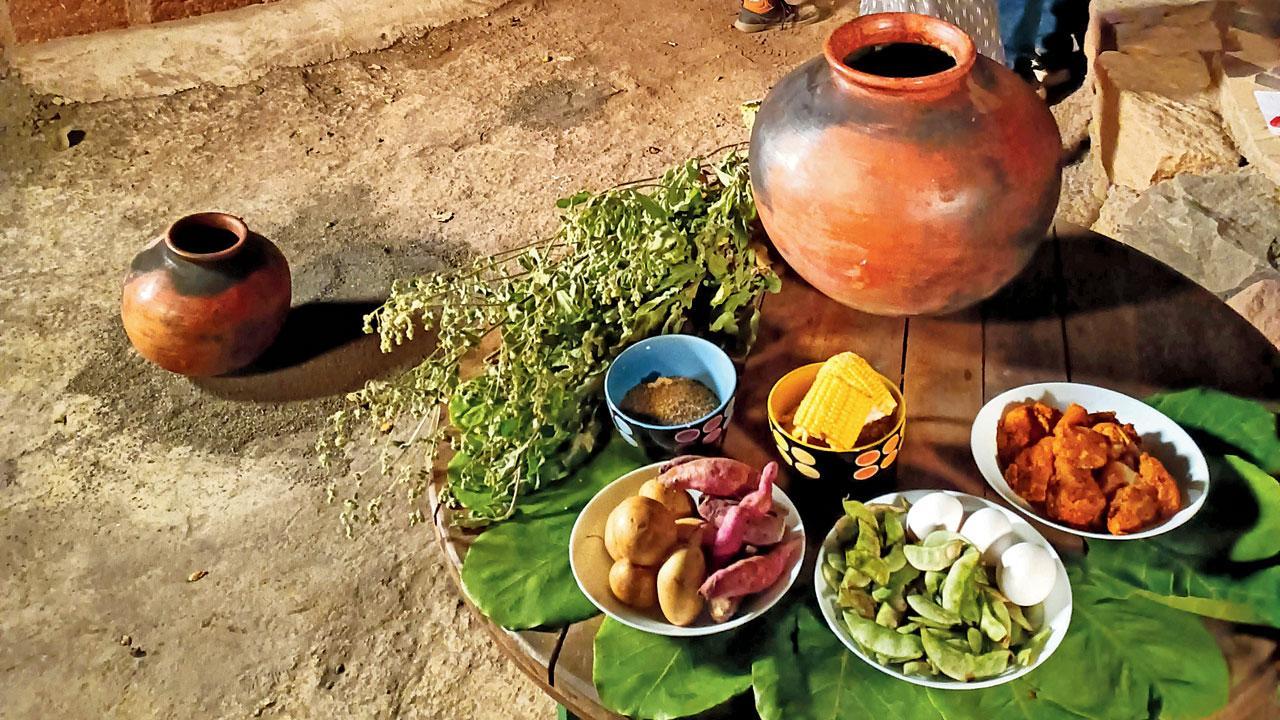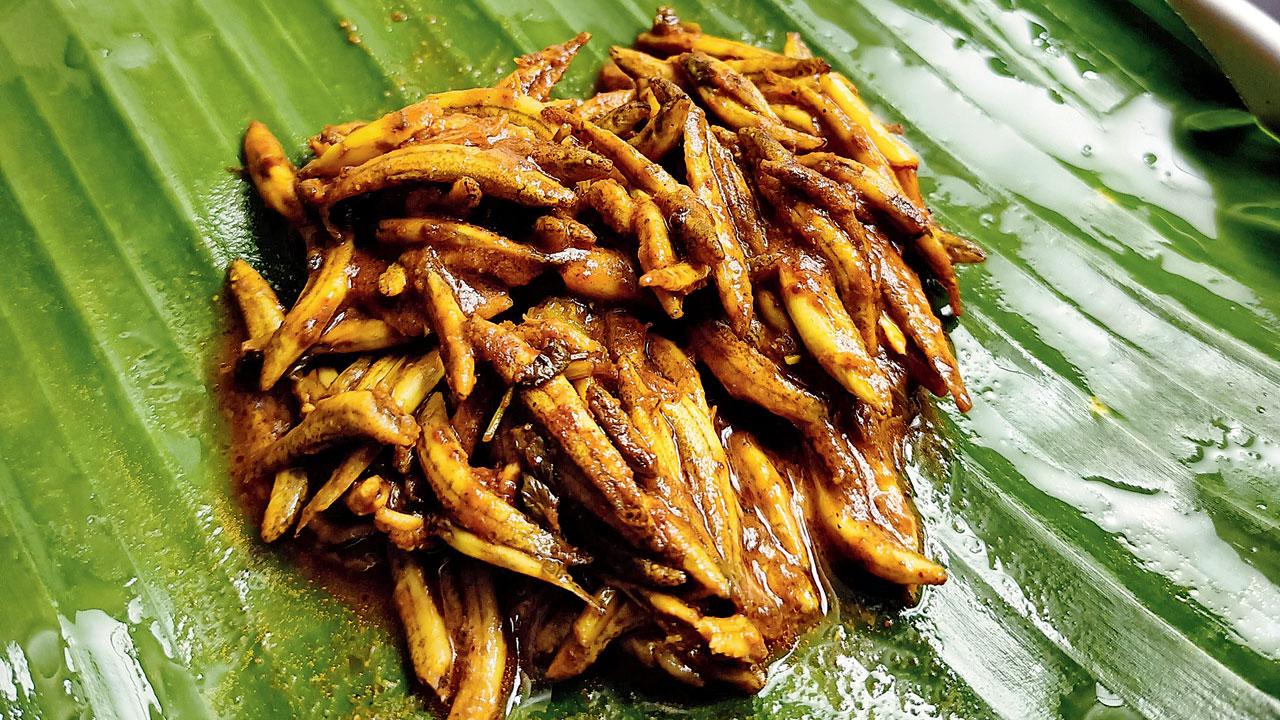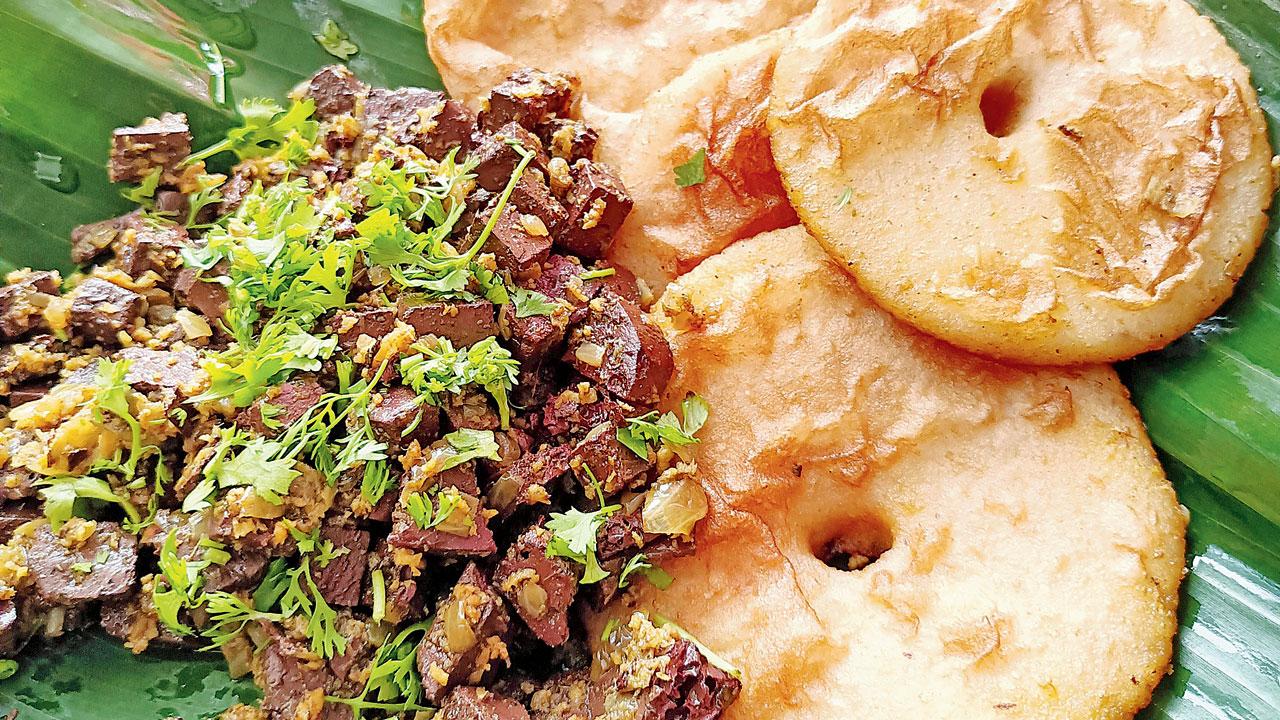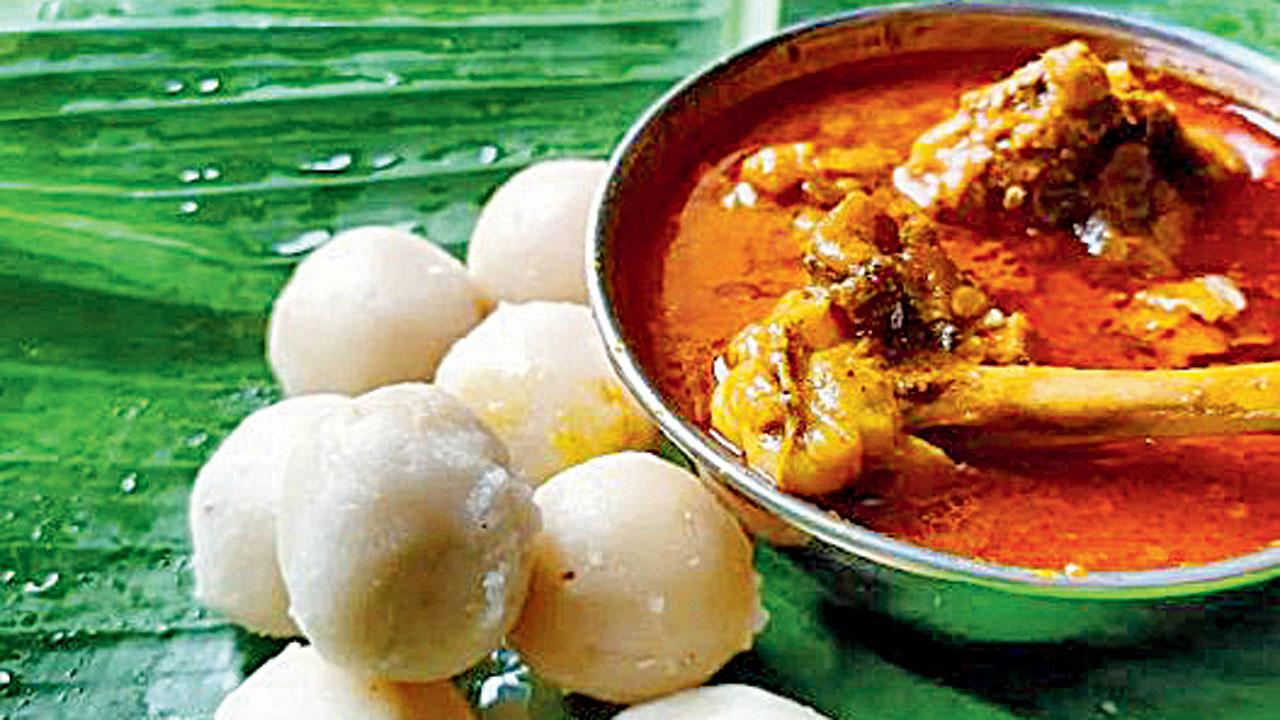If you’ve been Ro-Roing it to the coastal town on weekends to enjoy croissant and coffee at its new chic cafes, you’ve missed out on the real deal

Popti is a one-pot winter special native to the Konkan. Pics/Siddharaj Thale
Have you had tesriya in Alibaug? This dry gravy made of clams or oysters tastes divine; and that’s true of most luscious fish gravies, masala prawn, Bombay duck and pomfret fry. Maharashtra’s coast boasts of the freshest seafood and of course, the country’s best Alphonso; some of the freshest come from the ‘baugs’ (plantations) of Alibaug. The latest entrants on the coastal town’s culinary scene are chic cafes and restaurants, making this already-popular weekend destination witness a rush of foodies.
However, that’s not all there is to Alibaug, my hometown. It’s equally famous for its pristine beaches, historical landmarks, and posh weekend homes. And the local food is exquisite. That is if you care to look beyond irresponsible commercialisation. You will find homes that prepare and serve local specialities, made with seasonal ingredients, most of which include foraged herbs and greens, and use techniques that have been practiced and passed down for generations in the kitchens from Mandwa to Chaul. I’ve curated a list of dishes for you to try the next time you decide to make a trip to Alibaug.

AMBAVLELE VADE: Similar in appearance to the South Indian medu vada, ambavlele or fermented vada is made of rice flour, jaggery, fenugreek seeds and turmeric; deep fried to perfection. The interesting part of the process is the fermentation—hot oil is poured into a hole lined with onions of well-kneaded dough and left to ferment overnight. This tedious process and its cultural importance make it suited for special occasions, weddings, rituals and festivals. The kneading and fermenting skills take years to master and only those who have aced them are invited to prepare the vade. Interestingly, these are not served at restaurants; it’s an important food that’s served to deities who, it is said, don’t care for rice or bhakri.

MURYA: This tadpole-like fish climbs up freshwater streams in the month of Bhadrapad around September. They swim in large groups, but baiting them is a tedious process. Regardless, it’s mandatory to enjoy murya in this season with freshly-made rice bhakri. Back in the day, the murya was an important seawater fish unavailable during the rainy season. Muryancha bhongur is made by cooking broken rice (kani) till it forms lumps, roasting wild okra leaves on a wrought iron griddle and patting a thin layer of rice onto it. This is followed by the dry preparation of murya, layering it further with more leaves and murya. Another griddle is used to press it all down and hot charcoal is placed on top. It’s left to cook till the mixture turns into a thin crispy sheet.

RAKTI: Rakti, a blood-enriched recipe, finds its roots in the folk practices of rural Alibaug. Its origins connect to the belief that when a living being is sacrificed to the goddess, no part of the bali should be wasted. Even the bones are buried once the preparation is consumed. Back in the day, the priestess of the Kali temple would drink the first drawn blood of the sacrificed goat. The remainder, spewing from the animal’s jugular, would be collected in a vessel and allowed to coagulate. It would later be used for preparing rakti. The congealed blood was steamed and cut into portions before it was seasoned with hand-pounded spices and stir-fried with onion, grated coconut and plenty of curry leaves.

BOT KOMBADI: These lumps of steamed rice flour, shaped into roundels, are considered a wholesome meal. Also called boti, these are specially made during the Shimga festival of the Agri community. The balls are crushed into smaller pieces using the fingers and dunked into chicken or
mutton curry. A sweet version calls for the roundels to be dunked into coconut milk sweetened
with jaggery.
POPTI: Every winter, once the crops are harvested, Alibaug indulges in a culinary festivity called Popti. This unique village-style barbeque is often a spontaneous picnic that involves cooking in an earthen pot and is similar to the Gujarati preparation, umbariyu. Popti is a nutritious, non-vegetarian meal with high fibre and protein content. It gets its name from a wild shrub called bhamburdi, which grows after the paddy fields are cleared. This shrub, along with the locally grown vaal shenga are crucial to the recipe. The velvety leaves of the bhamburdi have a distinct flavour, which is brought out by slow cooking. People also add various other kinds of beans, potatoes, onions and most importantly, well-marinated chicken wrapped in almond leaves. The pot is sealed with the same shrub and is kept upside down. A fire is lit around it and left to slow cook for about an hour. The writer is a culture and history enthusiast recording Alibaug’s oral narratives.
Valachya shenga
Flat green bean is a unique and important produce of Alibaug. It is often confused with ghevda (dolichos beans), but these are indigenous to Maharashtra, and grown in the winters when the paddy fields are cleared and the land is still moist. Along with providing an extra income to the farmers, these pulses also add extremely needed nutrients to the soil, thereby making it more fertile for cultivation. They are further classified as ‘kadve vaal’ and ‘khare vaal’ based on where they are grown and cultivated.
 Subscribe today by clicking the link and stay updated with the latest news!" Click here!
Subscribe today by clicking the link and stay updated with the latest news!" Click here!










